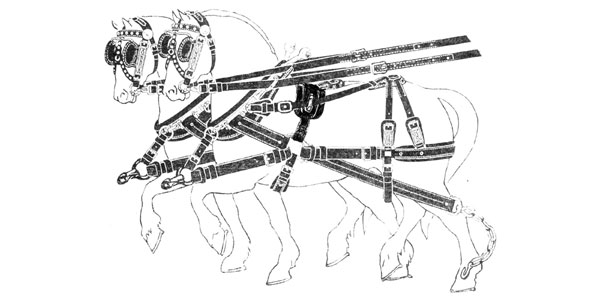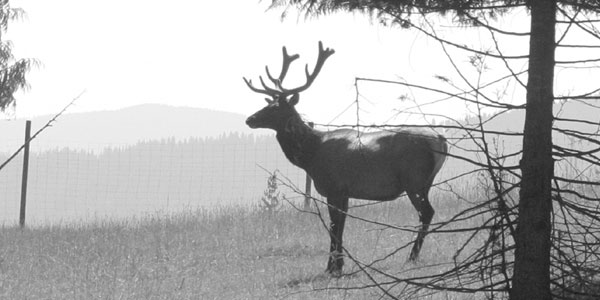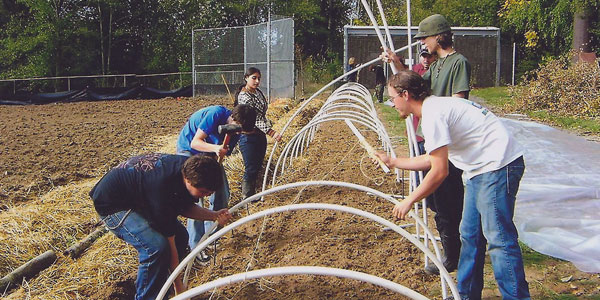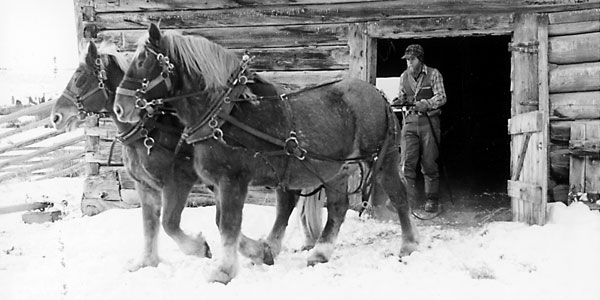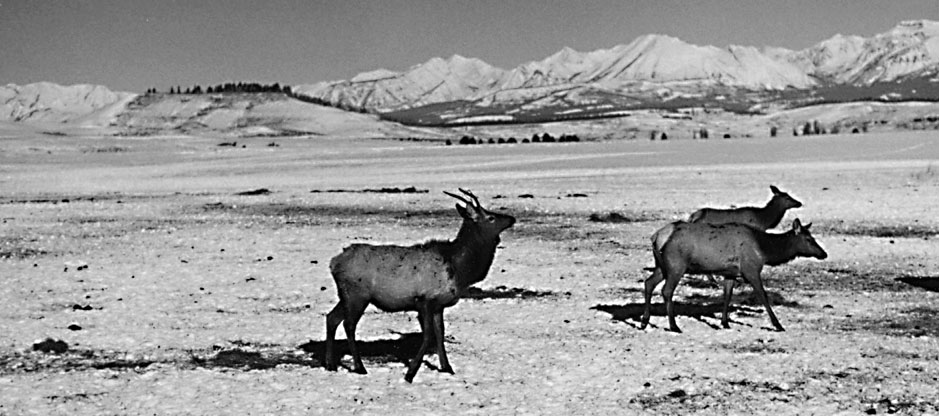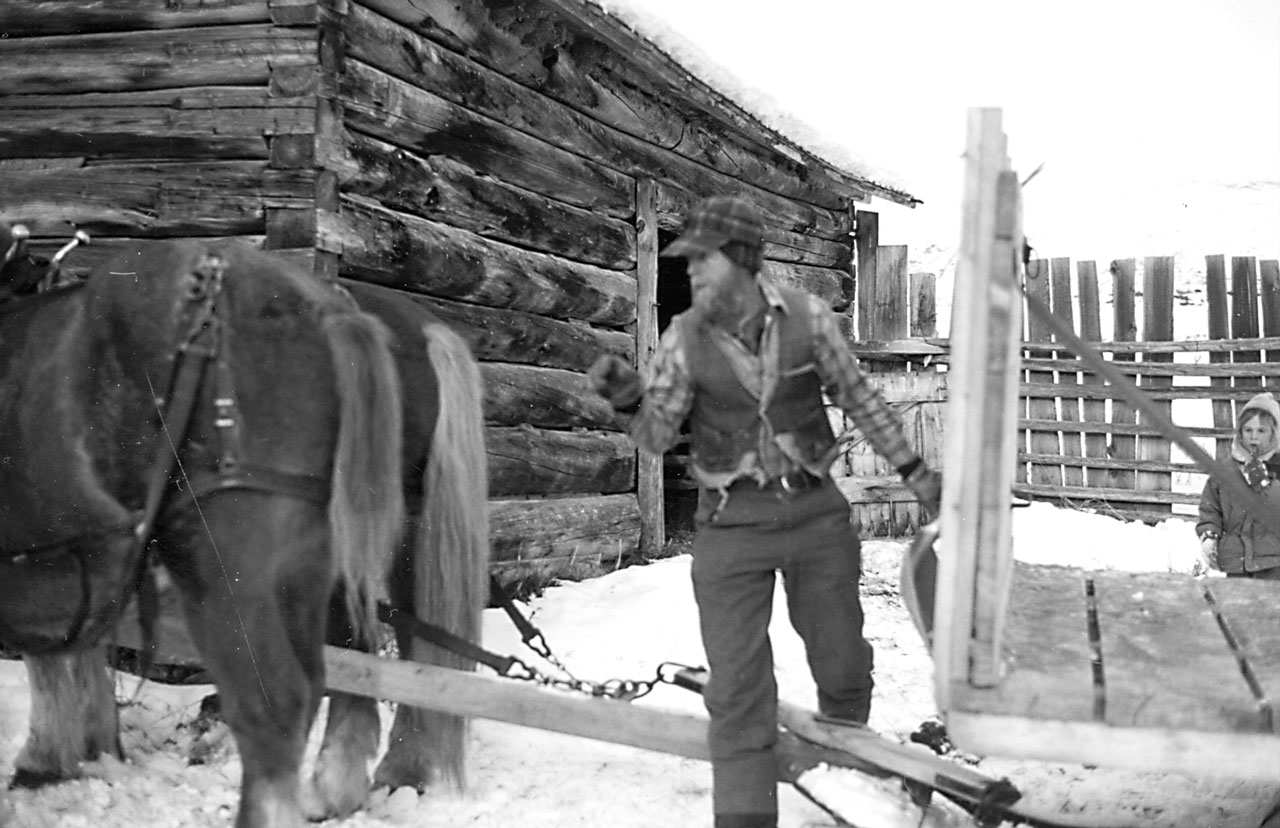Feeding Elk: Winter Work for the Belgians
by Dan Moran, Princeton, MN
Doug Strike of rural Sublette County is spending his second winter feeding wild elk in nearby Bondurant, Wyoming. Strike is supplementing his logging income as well as helping his team of Belgian draft horses to keep in shape for the coming season.
From May to the end of November he uses his horses to skid logs out of the mountains of western Wyoming.
I accompanied Doug, who is my son-in-law, and his children, Dylan Jackson Strike and Mariah Montana Strike, on one of the elk feeding adventures in late December.
It was a thirty minute drive from the Strike residence north to the Bondurant feeding ground.
When we arrived, we hiked in to the corral. Doug harnessed his team of Belgians, Rusty and Hubert, to a twenty foot sled. The team stays at the feeding site, sheltered by a log stable that is nestled in a valley close to a small stream that babbles through the deep snow.
The smell of hay, leather and horse manure brought back memories of the late 1940s in South Dakota where I first observed the use of horses, primarily for pulling bundle racks during threshing. A fond recollection of my childhood.
After harnessing up Rusty and Hubert and hooking up the hay sled we crossed the river to the fenced hay storage shed where we loaded up 60 bales of hay. The bales are about 1/3 alfalfa.
Then off we went through the deep snow to the feeding ground about 600 yards away. The elk were waiting, lackadaisically working over the remains of the last feeding. They generally move away from the sled as 10-year-old Dylan drives the team down the feeding line. Meanwhile Doug cuts the twine and pitches the hay off the sled in small bunches.
The wild elk fell in behind the wagon as we passed, each looking for the best forage. Large bulls with magnificent racks, cows with young calves, and yearlings-about 450 proud and graceful wild elk coaxed into the feeding ground by hay provided by the Wyoming Game and Fish Department.
This scene repeats itself in 22 other feeding grounds in northwest Wyoming because of the loss of native winter range for the elk. This loss occurs because of livestock ranching, roads, human habitation, and other resource harvesting operations, such as mining, oil fields, etc.
The project began in 1910 when the Wyoming legislature first provided funds to feed the elk herd in Jackson Hole.
Feeding is done to keep the elk from grazing with cattle, thus eating the feed of the cattle. It also helps to control brucellosis, a disease that causes cattle to abort their young.
Later on in the winter Doug will vaccinate the yearling elk for brucellosis. This procedure is done with a compressed air rifle that has paint to mark the animal in one barrel and the vaccine in the other barrel. He does only yearlings, shooting them in the hind quarter from 20 to 40 yards.
Feeding also reduces the number of elk on the highways.
I found the use of Doug’s beautiful Belgian team an exciting example of appropriate technology. I am sure that using the horses saves the Department of Game and Fish a good deal of money on machinery. Using the horses saves both fuel and machinery.
Magical thick fog enveloped us on the morning that I went along – fog so thick that I think fish could swim in it, but the horses had no problem finding the way to the hay and to the feeding ground.
The entire operation was an amazing thing to see. About 22,000 elk are fed. This is about 2/3 of the wild elk in northwestern Wyoming. It is really great to see them and I am glad that the state of Wyoming had the foresight to establish and promote this program and keep this magnificent animal around for us to see and to enjoy.

